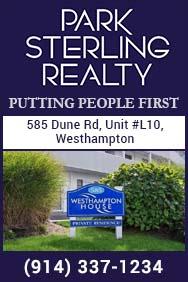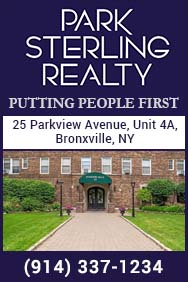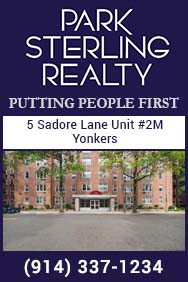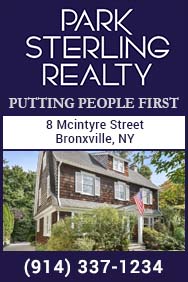From the Mayor: State Legislation that Never Made It to the Governor's Desk
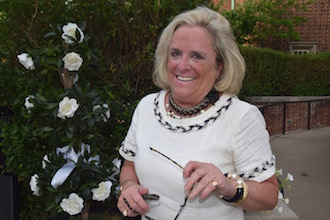
By Mary C. Marvin, Mayor of Bronxville
Dec. 12, 2018: Two weeks ago, I wrote about the legislation passed in Albany during the most recent session.
The following are items that never made it to the governor’s desk despite being beneficial to a majority of municipalities all across the state, including Bronxville.
Needed Public Infrastructure. While the primary role of local governments is to provide vital services to residents, no matter how small the municipality, we all must maintain critical public infrastructure such as roads, bridges, sewer, and water systems. Bottom line, New York State is old and so are its underpinnings. Infrastructure needs now far outpace the allotted funding and the situation is only further exacerbated by the state’s refusal to allow infrastructure repairs to be exempt from the 2% tax cap.
A reliable program designed to assist municipalities in addressing crumbling water, sewer, and storm water infrastructure, analogous to the albeit underfunded Consolidated Highway Improvement Program (CHIPS), must be formed to assist in water infrastructure replacement and rehabilitation before the situation becomes critical in even more communities.
Increase in One Percent Gross Receipts Tax. It is also clear that the local taxpayer is burdened beyond measure and new revenue sources that fairly tax all users must be found. To that end, municipalities must be able to increase the one percent gross receipts tax (GRT) on the gross operating income of utility companies located within their boundaries. Unfortunately, the laws governing this tax were written decades ago and have not been amended to account for changes in technology or the marketplace. The most glaring omission is the exclusion of cellular services as taxable. (State law was amended to include cellular services as taxable for purposes of the state’s own excise tax and New York City’s gross receipts tax, effectively leaving the rest of us out of the equation.)
Service Charge for Tax-exempt Proper. Another major source of property tax pressure is the increasing amount of tax-exempt property within a municipality. (Our village is approximately one quarter tax exempt--very much the state norm.) In 2016, Gannett newspapers completed an eight-part series illustrating the magnitude of the issue. According to their research, approximately $866 billion in state property is exempt from municipal and school taxes. The number of wholly exempt parcels in New York State grew from 179,420 in 1999 to 219,602 in 2016--a 22% increase--with the value of these properties more than doubling from $276 billion to $567 billion over the same time period.
Municipalities support legislation that would authorize, at local option, some sort of service charge to account for services and infrastructure improvements rendered to tax-exempt entities. One such idea currently receiving traction is a payment in lieu of taxes (PILOT) equal to 10% of what the tax-exempt property would generate in property taxes if taxable.
Arcane Civil Service Appointment Process. One of my personal sources of frustrations is the arcane civil service appointment process. In order to have an effective, locally tailored workforce, the law needs to be amended to authorize appointments without examination for employees with specialized skills.
As example of what we deal with today is the civil service exam for police officers. During an exam cycle, the three highest written test scorers must be gainfully employed before anyone else--candidates four to hundreds-plus--can be “touched.” It doesn’t matter that the first three highest test scorers do not have the language skills, personality traits, or affinity for your community that you are seeking for long-term employment and compatibility.
Scaffold Law. Ranking number two in my frustration matrix is New York’s one-of-a-kind Scaffold Law. Enacted in 1885, it holds contractors, employers, property owners, and municipalities absolutely liable for gravity-related injuries, even if the worker was grossly negligent. Studies have shown that general liability insurance premiums have skyrocketed because of increased litigation resulting from the Scaffold Law. (As point of fact, Weitz and Luxembourg is the nation’s number-one plaintiff’s lawyer for this niche suit and State Speaker Sheldon Silver was of counsel for decades.) New York’s insurance premiums are 300% to 1,200% higher than any other state in the country as a direct result.
Design-Build Concept. On the construction front, municipalities such as ours would also benefit from the design-build concept. The design-build model is a project delivery system used as an alternative to the traditional design-bid-build model.
Under the traditional approach, design and construction are split—separate entities, separate contracts, separate work. The design-build system is an integrated approach that provides the municipality with design and construction services under one contract. By relying on a single point of responsibility, the design-build model minimizes risks for the project owner, reduces the delivery schedule by consolidating the design phase and construction phase with a single source of contact, and cuts costs by streamlining the construction process.
The most recognizable and extolled examples of design-build--the Kosciuszko and Tappan Zee Bridges--credit design-build with keeping the Kosciuszko Bridge project on time and on budget and reducing the Tappan Zee Bridge’s construction costs by 30% and the project’s completion time by 14%. While several state agencies are currently authorized to use and benefit from design-build, no authority exists for municipalities to use this model.
Recyclable Materials. Finally, given the fact that the market for recyclable materials has changed dramatically in recent months, modifications must be made to the market. Historically, China was the primary purchaser of recycled materials from the U.S. However, China has developed its own recycling system to manage the waste produced by its growing middle class. Many in the industry believe that China intends to stop importing all recycled materials by 2020. New York has been hurt most by this change, as we do not have ready manufacturing markets.
Modifying and developing the recyclables market in New York State is imperative. Cities and villages should be financially rewarded for creative problem-solving that balances the public policy objective of recycling with current market conditions.
As we await the new legislative session, I will keep you abreast as to any movement on the above initiatives.
Editor's note: As a public service, MyhometownBronxville publishes articles from local institutions, officeholders, and individuals. MyhometownBronxville does not fact-check statements therein, and any opinions expressed therein do not necessarily reflect the thinking of its staff.
Government & History Directory
Bronxville is a quaint village (one square mile) located just 16 miles north of midtown Manhattan (roughly 30 minutes on the train) and has a population of approximately 6,500. It is known as a premier community with an excellent public school (K-12) and easy access to Manhattan. Bronxville offers many amenities including an attractive business district, a hospital (Lawrence Hospital), public paddle and tennis courts, fine dining at local restaurants, two private country clubs and a community library.
While the earliest settlers of Bronxville date back to the first half of the 18th century, the history of the modern suburb of Bronxville began in 1890 when William Van Duzer Lawrence purchased a farm and commissioned the architect, William A. Bates, to design a planned community of houses for well-known artists and professionals that became a thriving art colony. This community, now called Lawrence Park, is listed on the National register of Historic Places and many of the homes still have artists’ studios. A neighborhood association within Lawrence Park called “The Hilltop Association” keeps this heritage alive with art shows and other events for neighbors.
Bronxville offers many charming neighborhoods as well as a variety of living options for residents including single family homes, town houses, cooperatives and condominiums. One of the chief benefits of living in “the village” is that your children can attend the Bronxville School.
The Bronxville postal zone (10708, known as “Bronxville PO”) includes the village of Bronxville as well as the Chester Heights section of Eastchester, parts of Tuckahoe and the Lawrence Park West, Cedar Knolls, Armour Villa and Longvale sections of Yonkers. Many of these areas have their own distinct character. For instance, the Armour Villa section has many historic homes and even has its own newsletter called “The Villa Voice” which reports on neighborhood news.
Village of Bronxville Administrative Offices
337-6500
Open 9:00am - 4pm excluding holidays and weekends
Bronxville Police Department
337-0500
Open 24 hours
Bronxville Parking Violations
337-2024
Open 9:00am - 4pm excluding holidays and weekends
Bronxville Fire Deparment
793-6400

